Ayodhya has been the central point of Hinduism for centuries and is often referred to as “The City of Lord Ram”.

Ram is the soul of India and Ayodhya resides in the heart of the Sanatana deity Rama. Ayodhya is also known as ‘Oudh’ or “Avadh”, a city on the banks of the Saryu River.
Every crevice of this location is filled with sacrifice, bravery, and righteousness. One of the holiest and most well-known pilgrimage sites in the world is the Ram temple in Ayodhya. The Hindus’ supreme god, Lord Shri Ram, was born in Ayodhya, a sacred location. Ayodhya has long been renowned for its fame and splendour around the world.
Lord Shri Ram was the incarnation of Lord Vishnu, one of the primary three Hindu gods (along with Brahma, Vishnu, and Mahesh), according to legendary writings and local historians.
Why is Ayodhya famous all over the world ?
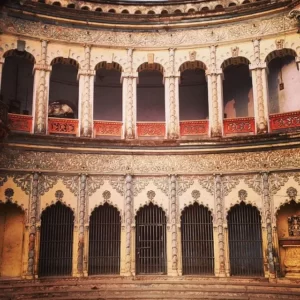
For thousands of years, pilgrims have travelled to Ayodhya because of its rich history and culture. It is most widely recognised for serving as the backdrop to several occurrences in the Hindu epic Ramayana and as the birthplace of Lord Rama, the seventh incarnation of Lord Vishnu.
Ayodhya has also played an important role in politics, art, literature and music. The city’s temples, monuments, festivals and other attractions make it an important tourist destination.
Cultural heritage of Ayodhya –
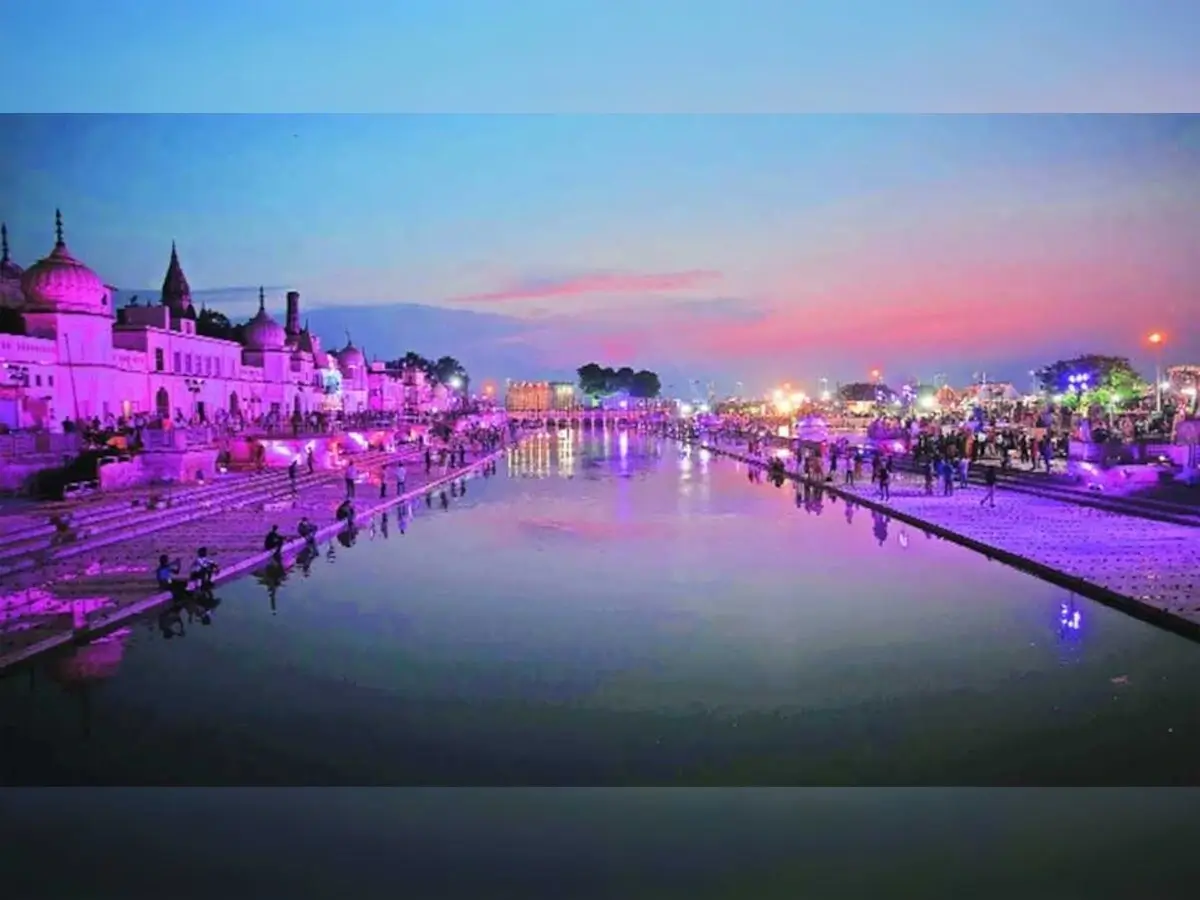
Ayodhya is home to many cultural sites that are associated with the famous Hindu epic Ramayana. Tourists can explore the ancient architecture, monuments and temples that have been standing for centuries ago. The city also offers a unique insight into the customs and traditions of ancient India.
History of Ayodhya
Ayodhya is a city of immense religious and cultural significance in India. Its history dates back to ancient times when it was a major centre of trade and commerce.
Lots Hindu texts, especially the Ramayana and Mahabharata, which chronicle the birth and life of Lord Rama in Ayodhya, make reference to the city. Furthermore, it is asserted that Lord Rama himself constructed the first temple in Ayodhya.
In later centuries, this temple was destroyed by invaders who built their own structures on the site. Despite its tumultuous history, Ayodhya still stands today as an important pilgrimage site for Hindus around the world.
Top 10 best places to visit in Ayodhya –
Due to its historical significance and religious value, Ayodhya is one of the most frequently visited tourist attractions in Uttar Pradesh. Countless temples in this area are visited by thousands of pilgrims each year from all around India.
Hanumangarhi –

Famous shrine Hanumangarhi is situated in Ayodhya, Uttar Pradesh, India. Lord Hanuman, who is revered as the personification of tenacity, devotion, and loyalty, is honoured at this significant Hindu pilgrimage site. Due to the following factors,
Religious significance –
Hanumangarhi is very important to Ayodhya tourism. One of Ayodhya’s oldest and most respected temples is Hanumangarhi. During the time that Lord Rama ruled Ayodhya, it is thought that Lord Hanuman lived here. Every year, hundreds of Hanuman worshippers visit the temple in search of the Lord’s blessings.
Architectural Marvel –
Hanumangarhi is a beautiful temple that is known for its impressive architecture. The temple has many intricately carved pillars and a stunning gate that is adorned with numerous images of Lord Hanuman. The temple also has a large courtyard and several shrines dedicated to other deities.
Cultural value –
Hanumangarhi is a significant cultural heritage site in Ayodhya. It is said that the temple was built by the Nawab of Awadh, who was a Muslim ruler, in the 18th century. The temple’s history showcases the religious harmony and tolerance that has been a part of Ayodhya’s culture for centuries.
Where it is –
Hanumangarhi is conveniently situated in Ayodhya, making it an attractive place to visit. It is located in the centre of the city, close to various other prominent tourist attractions like the Ram Janmabhoomi and Kanak Bhawan temples.
Dashrath Bhavan – (Ram Janam Bhoomi)
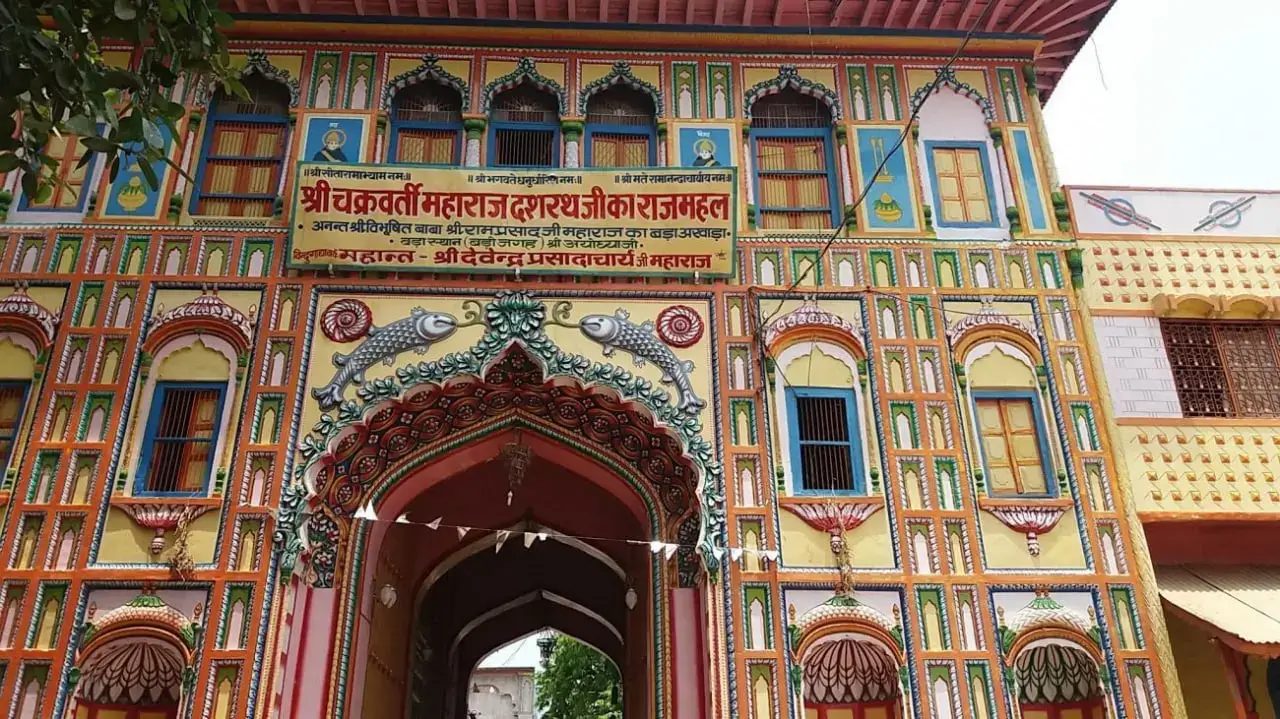
Ayodhya, India’s Dashrath Bhavan is a structure that Hindus regard as having tremendous religious significance. An prominent Hindu god named Lord Rama is thought to have been born there.
Dashrath Bhavan was the royal residence of King Dashrath, the father of Lord Rama, according to the Hindu epic Ramayana. The “Garbhagriha” or “womb chamber” is a room within this palace where it is supposed that Lord Rama was born. The Ram Janmabhoomi Temple, one of the holiest shrines in Hinduism, currently serves as a marker for the location.
Significance Of Dashratha Bhavana –
Beyond being Lord Rama’s birthplace, Dashrath Bhavan and the Ram Janmabhoomi Temple are significant. It is a representation of their faith in and devotion to Lord Rama and the values he stands for, such as justice, truth, and compassion, for many Hindus.
Conflicts Between Religion’s –
The temple has long been a destination for pilgrims, and due to longstanding conflicts between Hindus and Muslims regarding ownership of the land, the construction of the temple has been a very divisive topic in Indian politics.
Ram ki pauri – Ayodhya saryu Ghat
Ram Ki Pauri Ghat is a beautiful and serene spot in the holy city of Ayodhya. It is believed to be the spot where Lord Rama took a dip in the Sarayu River to purify himself before performing his father’s funeral rites. The ghat is named after Lord Rama, who is also known as Ram, and ‘Pauri’ means steps leading down to the river.
Glimpse Of Holy River Saryu –

Ram Ki Pauri Ghat’s simplicity and serenity are what make it remarkable. The entire region is encircled by beautiful green vegetation and trees, and the ghat is flanked with steps that descend to the river. An atmosphere of calmness and tranquillity is produced by the Sarayu River’s sparkling waters and the cold air that blows across the ghat.
The evening aarti that takes place at Ram Ki Pauri Ghat is one of its most notable aspects. Lamps are lit and prayers are presented to Lord Rama during this lovely celebration, which attracts devotees from all around the world.
Ram Ki Pauri Ghat is beautiful because of its tranquilly and simplicity. The ghat is flanked by steps that lead down to the river, and the entire area is encircled by lush, greenery and trees. The cold air that blows across the ghat and the sparkling waters of the Sarayu River create a feeling of calmness and tranquilly.
One of its most notable features is the evening aarti at Ram Ki Pauri Ghat. During this beautiful celebration, which draws devotees from all over the world, lamps are lit and prayers are offered to Lord Rama.
Anyone who witnesses it will undoubtedly be struck by the mystical and entrancing ambiance created by the sight of the lamps flickering in the darkness and the sound of the hymns being recited. All things considered, Ram Ki Pauri Ghat is a must-see location in Ayodhya tourism for anyone who want to take in the tranquil beauty of this sacred city and become fully immersed in the rich culture and customs of India.
Kanak Bhawan –
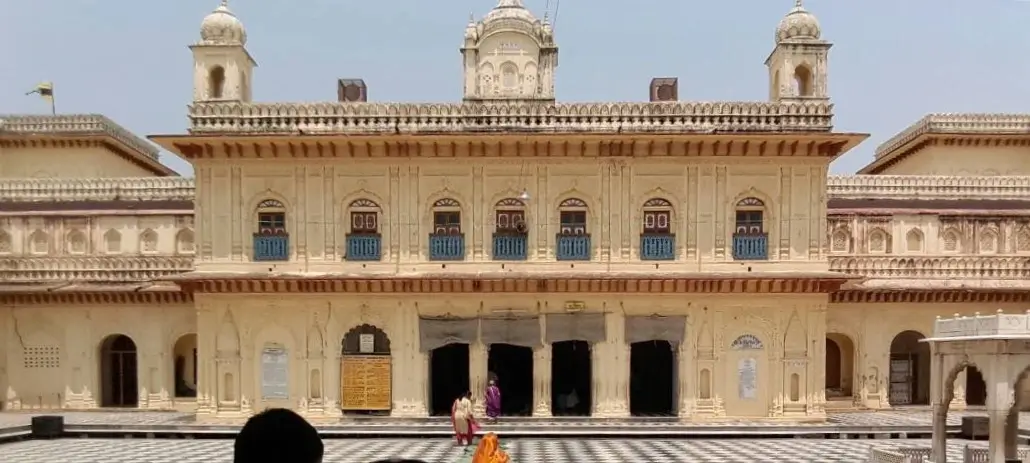
Kanak Bhawan holds great importance in Ayodhya tourism because of its unique architecture and religious significance.
Kanak Bhawan is known for its stunning architecture and intricate carvings. The temple is built in the traditional North Indian style, and its walls and ceilings are adorned with beautiful paintings and sculptures. The temple’s main sanctum is made of marble and is incredibly beautiful, with intricate carvings and designs.
According to Hindu mythology, Kanak Bhawan was gifted to Sita by her mother, Queen Sunaina, as a wedding gift. It is believed that Lord Rama and Sita used to reside in this temple during their time in Ayodhya.
Legend And Myth -]
The temple has a rich history and is closely associated with the Ramayana, one of the most important epics in Hindu mythology. The temple’s architecture and design showcase the rich cultural heritage of Ayodhya.
where it is –
It is located in the centre of the city, close to numerous other famous tourist destinations like the Ram Janmabhoomi and Hanumangarhi temples.
Treta Ke Thakur Mandir –
The temple is dedicated to Lord Rama, who is believed to have lived in Ayodhya during the Treta Yuga, according to Hindu legends. The spiritual beauty of Treta Ke Thakur Mandir can be explained in the following ways:
Historical Significance –
One of the earliest temples in Ayodhya is thought to be Treta Ke Thakur Mandir, which has a long history. According to legend, the temple was constructed on the site where Lord Rama is thought to have performed a sacred fire ceremony known as a yajna during the Treta Yuga. For Hindus, the temple is a sacred location because of its lengthy history and connection to Lord Rama.
Beauty of Treta Ke Thakur Mandir –
The temple has a unique octagonal shape and is built in the traditional North Indian style. The temple’s sanctum sanctorum houses the idol of Lord Rama, which is believed to be the same idol that was i nstalled during Lord Rama’s time in Ayodhya.
Religious Importance –
Treta Ke Thakur Mandir is an important pilgrimage site for Hindus, and it is believed that a visit to the temple can bring spiritual peace and fulfilment. The temple is dedicated to Lord Rama, who is considered to be an incarnation of Lord Vishnu, and is worshipped by millions of Hindus worldwide.
Cultural Heritage –
An important cultural heritage monument, Treta Ke Thakur Mandir displays the rich religious and cultural heritage of Ayodhya. The temple’s past, present, and future provide a window into the religious and cultural customs that have long been a part of Ayodhya’s history.
Mani Parvat –
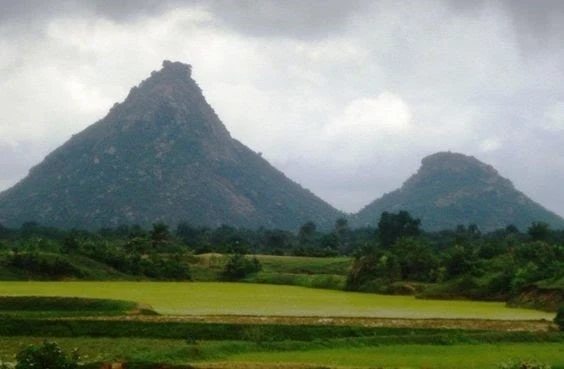
The hill is also thought to be the location of Lord Rama’s brother, Bharata, who performed a large yajna or fire rite to purify the area upon Lord Rama’s return from exile.
Mani Parvat is a picturesque site with rich foliage and panoramic views of the surrounding environment, in addition to its religious significance. The hill is lined with temples, shrines, and other religious structures and is a popular pilgrimage and tourism site.
Visitors can trek to the summit of the hill for spectacular views and to pray at the different temples and shrines. The hill is also home to several monkeys, making it a pleasant and unique location for nature enthusiasts.
The hill is also believed to be the spot where Lord Rama’s brother, Bharata, performed a great yajna or fire ritual to purify the land after Lord Rama’s return from exile.
Mani Parvat is a picturesque site with rich foliage and panoramic views of the surrounding environment, in addition to its religious significance. The hill is lined with temples, shrines, and other religious structures and is a popular pilgrimage and tourism site.
Visitors can trek to the summit of the hill for spectacular views and to pray at the different temples and shrines. The hill is also home to several monkeys, making it a pleasant and unique location for nature enthusiasts.
Sita ki Rasoi –
Hindus frequently visit Sita Ki Rasoi, particularly those who worship Lord Rama and Goddess Sita.
Religious Significance about –
During their time in Ayodhya, Goddess Sita is said to have prepared meals for Lord Rama in the kitchen known as Sita Ki Rasoi. According to legend, Sita used to prepare meals with a lot of love and devotion, and Hindus revere this kitchen as a hallowed space. The Ram Janmabhoomi temple, thought to be the site of Lord Rama’s birth, is close by the kitchen.
Cultural Heritage of Sita Ki Rasoi –
Sita Ki Rasoi is a significant cultural heritage site in Ayodhya. It is said to be one of the oldest structures in the city and is closely associated with the Ramayana, one of the most important epics in Hindu mythology.
The kitchen’s architecture and design showcase the rich cultural heritage of Ayodhya and offer visitors a glimpse into the city’s rich history.
where it is –
The Ram Janmabhoomi temple is situated next to Sita ki Rasoi and it is located within walking distance from many other popular tourist attractions such as Kanak Bhawan and Hanumangarhi temple.
Guptar Ghat –
Guptar Ghat is a lovely and ancient place in Ayodhya. This ghat is located on the Sarayu River’s banks and is thought to be the spot where Lord Rama took a dip in the river during his exile in the jungle. It is also thought to be the location where he vanished into the ground (“gupt” means “hidden” in Hindi) after serving his term on Earth.
The ghat is surrounded by attractive foliage and is an idyllic spot to sit and take in the scenery. A large number of devotees gather here to pray and take a holy bath in the river. The ghat is also decorated with exquisite sculptures and idols of Hindu deities, adding to its allure.
The region around Guptar Ghat has seen tremendous development in recent years, with better visitor facilities such as a well-maintained park and walking routes along the riverfront. The Uttar Pradesh government has also declared plans to develop the area into a major tourism destination, with an emphasis on highlighting Ayodhya’s rich cultural and religious legacy. Guptar Ghat is a must-see destination for anyone interested in history, spirituality, or natural beauty.
In conclusion,
Ayodhya is a city rich in history, culture, and spirituality, with many attractive and fascinating locations to explore.
Ayodhya has something for everyone, from historic temples and shrines to gorgeous riverbanks and hilltops. Ram Janmabhoomi Temple, Hanuman Garhi Temple, Kanak Bhawan Temple, Nageshwarnath Temple, Treta Ke Thakur Temple, Lakshman Qila, Guptar Ghat, Saryu River, Mani Parvat, and Faizabad Museum are among the top ten most beautiful places to visit in Ayodhya.
Each of these locations is distinct in its own way, providing stunning views, historical significance, and spiritual experiences. A visit to these top ten gorgeous spots in Ayodhya is likely to inspire and revitalise visitors, as well as provide a greater appreciation of the city’s rich cultural legacy.
Also Read : The historical myth about Jatayu Earth Center, Kollam, India



